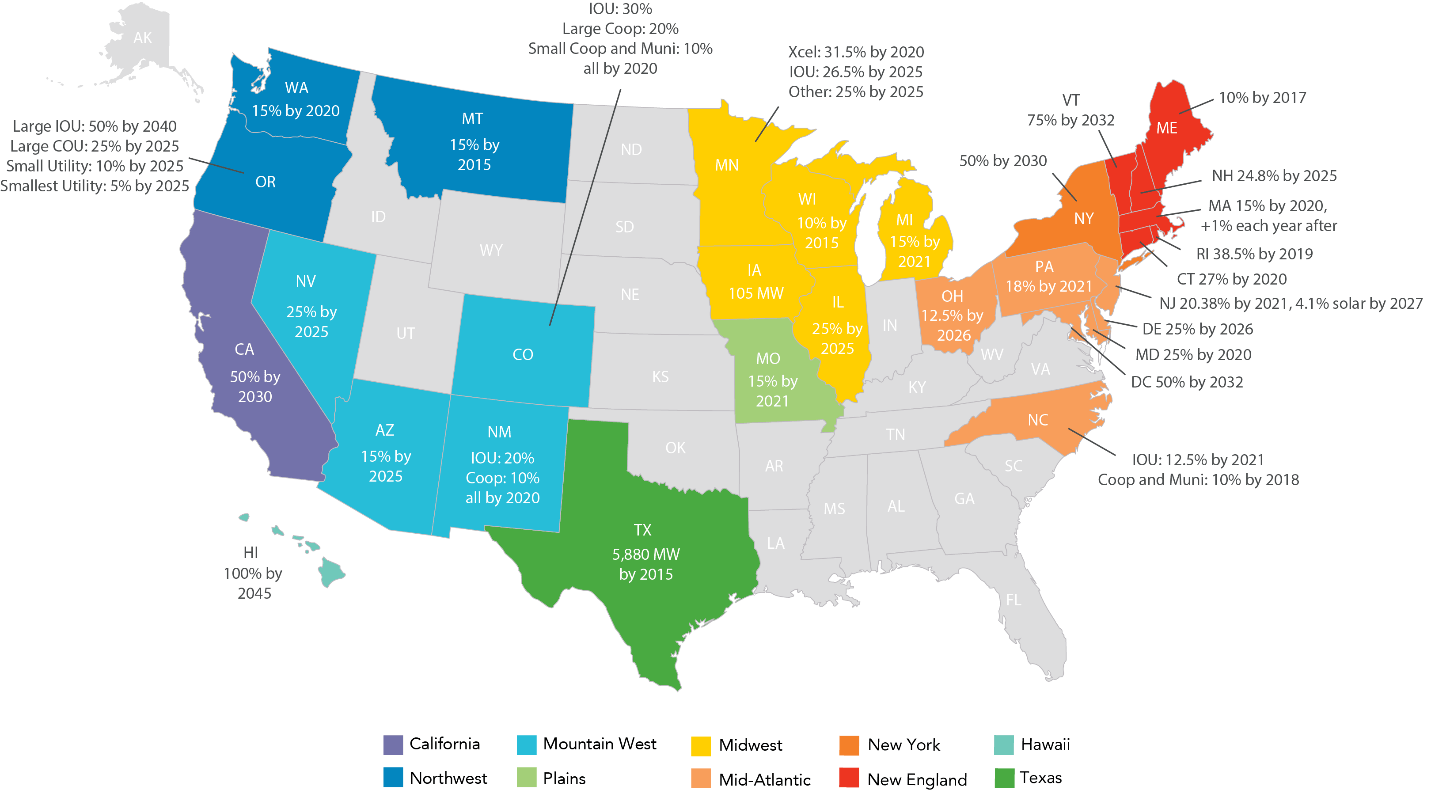New RPS report: Where are the opportunities, and how big are they?
States across the U.S. are choosing to meet more of their electricity demand using renewable energy. But what does that mean for wind power? Where are the growth opportunities, and how big are they?
A new report seeks to answer exactly these questions.
Yesterday, we released the AWEA State RPS Market Assessment 2017, the series’ fourth installment. The report provides estimates of near-term demand for wind energy and other renewables resulting from state renewable portfolio standards (RPS), accounting for compliance to date.
Twenty-nine states and the District of Columbia have RPS policies requiring state utilities to supply a specified percentage of their electricity from renewable resources by a certain year. State RPS targets range widely from 10 percent to 100 percent renewable energy. Hawaii and Vermont lead the nation at 100 percent by 2045 and 75 percent by 2032, respectively. Three states – California, Oregon, and New York – and the District of Columbia have RPS targets of 50 percent. Fifteen states (half of all RPS states) now have targets of 25 percent or greater.
Wind energy has historically been the renewable technology of choice to meet RPS requirements, representing 61 percent of RPS-related capacity additions to-date, according to Lawrence Berkeley National Lab. Given the success of RPS programs in driving significant wind energy development, this report takes a detailed look at RPS requirements to assess the incremental RPS resource need or “demand” that wind is eligible to meet, as well as the RPS demand that wind is expected to capture going forward.
Nationwide, states need approximately 105 terawatt hours (TWh) of additional renewable energy generation to meet wind-eligible RPS requirements through 2025. That’s equivalent to roughly 35 gigawatts (GW) of wind capacity. We estimate RPS policies will drive the development of approximately 16 GW of new wind power capacity from 2017 through 2025.
 Check out the full AWEA State RPS Market Assessment 2017 to learn more about:
Check out the full AWEA State RPS Market Assessment 2017 to learn more about:
- Characteristics of RPS programs in each state
- Summary of RPS policy activity in the past year
- Maps summarizing RPS requirements across the U.S.
- Estimates of cumulative and annual nationwide demand driven by RPS policies
- Breakdown of regional RPS demand
- State RPS demand rankings
- State by state examination of RPS demand and recent RPS compliance, including wind’s share of compliance
Researchers find RPS policies have wide-ranging benefits that far outweigh their costs. Consumers save billions of dollars and there are substantial clean air benefits. The track record proves it—RPS’s are successful policies, and wind plays an important role in helping states meet their targets.





